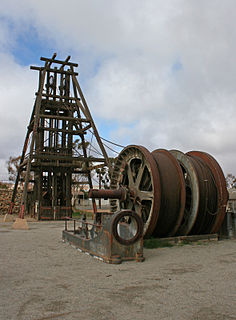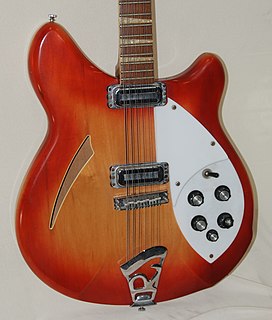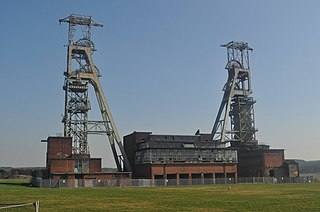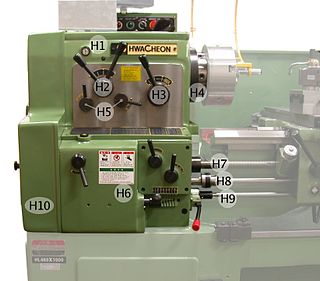This page is based on this
Wikipedia article Text is available under the
CC BY-SA 4.0 license; additional terms may apply.
Images, videos and audio are available under their respective licenses.
The Fender Starcaster is a semi-hollowbody electric guitar made by the Fender company. The Starcaster was part of Fender's attempt to enter the semi-hollowbody market, which was dominated by Gibson's ES-335 and similar designs.
The Fender Jazzmaster is an electric guitar designed as a more expensive sibling to the Fender Stratocaster. First introduced at the 1958 NAMM Show, it was initially marketed to jazz guitarists, but found favor among surf rock guitarists in the early 1960s. Its appearance is similar to the Jaguar, though it is tonally and physically different in many technical ways.

B.C. Rich is an American brand of acoustic and electric guitars and bass guitars founded by Bernardo Chavez Rico in 1969. The company started to make electric guitars in the 1970s that were notable for their atypical body shapes. In the following decade B.C. Rich gained a broader exposure with the popularity of heavy metal and has since often been linked to that music scene. The company briefly switched owners in the 1990s before being acquired in the 2000s by Hanser Music Group, a distribution company based in Hebron, Kentucky. B.C Rich has since been licensed to Praxis Musical based in Orange, California. The high-end B.C. Rich instruments are custom-made in the USA by Ron Estrada whereas the mid- and low-budget models are produced in different countries in Asia.

A marking gauge, also known as a scratch gauge, is used in woodworking and metalworking to mark out lines for cutting or other operations. The purpose of the gauge is to scribe a line parallel to a reference edge or surface. It is used in joinery and sheetmetal operations.
The Fender Lead Series was produced by the Fender/Rogers/Rhodes Division of CBS Musical Instruments. The series comprised Lead I, Lead II, Lead III and Lead Bass models.

Clipstone in north Nottinghamshire is a small ex-coal mining village built on the site of an old army base. The population of the civil parish was 3,469 at the 2001 census, increasing to 4,665 at the 2011 census.
The Fender Electric XII was a purpose-built 12-string electric guitar, designed for folk rockers. Instead of using a Stratocaster-body style, it used one similar to a Jaguar/Jazzmaster body style. It was also a departure from the typical "Stratocaster"-style headstock, instead featuring a long headstock nicknamed the "hockey-stick" headstock. The Electric XII used a unique split pickup design and had a 4 way pickup selector allowing for neck, neck & bridge in series, neck & bridge in parallel and bridge only options. It also used a string-through-body design similar to a Telecaster to help increase sustain.

The Squier Super-Sonic was a guitar manufactured and sold by Squier for two years in the 1990s as part of Fender's 1997 Vista series. The guitar was designed by Joe Carducci, who was Fender's electric guitar product manager at the time, and who may have been inspired by an image of Jimi Hendrix playing a Fender Jazzmaster 'upside-down', or left-handed.

A headframe is the structural frame above an underground mine shaft.

Snibston is an area east of Ravenstone, north west Leicestershire, in the English Midlands. Originally rural, part of Snibston was transformed into a coal mining village by the opening of coal mines by the Snibston Colliery Company in the early 1830s. This industrial part of Snibston was subsequently subsumed into the developing town of Coalville, though small rural areas of Snibston survive within the civil parishes of Ravenstone with Snibston and Hugglescote and Donington le Heath. In the part of Snibston within the latter civil parish stands the 13th-century church of St Mary, noted as the smallest church still in use for regular worship in England. The main Snibston Colliery was sunk in 1831, and after its closure the Snibston Country Park with the Snibston Discovery Museum was built on part of the colliery site. Part of the park is Snibston Grange Local Nature Reserve. The population is included in the civil parish of Ravenstone with Snibston.

The Rickenbacker 360/12 is a semi-hollow body with set neck construction electric guitar made by the Rickenbacker company; it was among the first electric twelve-string guitars. This instrument is the 12 string variant of the Rickenbacker 360. Rickenbacker uses an innovative headstock design that incorporates both a slotted-style peghead and a solid peghead, thereby eliminating the need for the larger headstock normally associated with a twelve-string guitar.

Starcaster by Fender is a range of instruments and accessories aimed at students/beginners, marketed by the prominent guitar company Fender from the early 2000s until at least 2011. As of April 2018 no products were being marketed under this brand.

Clipstone Colliery was a coal mine situated near the village of the same name on the edge of an area of Nottinghamshire known as “The Dukeries” because of the number of stately homes in the area. The colliery was owned by the Bolsover Colliery Company and passed to the National Coal Board in 1947. The headstocks and powerhouse are grade II listed buildings.

In machine tools, a spindle is a rotating axis of the machine, which often has a shaft at its heart. The shaft itself is called a spindle, but also, in shop-floor practice, the word often is used metonymically to refer to the entire rotary unit, including not only the shaft itself, but its bearings and anything attached to it.

Full circle ringing is a method of ringing a bell such that it swings in a complete circle from mouth upwards around to mouth upwards and then back again repetitively.

Brinsley Colliery was a coal mine in west Nottinghamshire, close to the boundary with Derbyshire, in what is now Broxtowe district.












